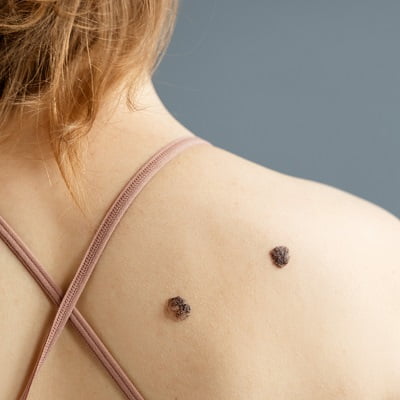Once a mole is removed, the journey isn’t over. Proper skin aftercare plays a vital role in healing and minimizing any risk of scarring, pigmentation, or infection. Whether the mole was removed through laser treatment, excision, or shave removal, your skin will need some time and attention to recover fully. In the center of this healing phase, many individuals seek guidance on how to support the skin naturally and effectively. This is especially important for those undergoing Mole Removal Treatments in Dubai, where the climate and lifestyle can impact recovery. Aftercare not only improves the final aesthetic result but also ensures that your skin heals in a healthy, balanced way.

The First 24 Hours: What to Expect
Initial Sensations and Appearance
Immediately after removal, the treated area might appear red, slightly swollen, or tender. This is completely normal and part of your body’s natural healing response. A scab or crust may form within a day or two, and it’s important not to disturb this protective layer.
Keep the Area Clean
Gently clean the area with mild, fragrance-free soap and lukewarm water. Pat dry with a soft cloth—never rub. Do not apply alcohol or hydrogen peroxide, as these can be too harsh and delay healing.
Day-by-Day Aftercare Guide
Day 1 to 3: Protect and Soothe
Apply a thin layer of the ointment or cream prescribed by your specialist.
Keep the area covered with a sterile bandage, especially if it’s in a spot prone to friction or exposure.
Avoid touching or scratching the area.
Day 4 to 7: Let It Breathe (When Appropriate)
Once the scab forms and begins to harden, you may be advised to leave the area uncovered.
Still apply the healing ointment as directed to keep the skin hydrated.
Week 2 and Beyond: Long-Term Skin Support
Begin using scar-minimizing products if recommended (such as silicone-based gels or sheets).
Hydrate your skin with a gentle moisturizer.
Continue avoiding harsh scrubs or active ingredients (like retinol or exfoliating acids) around the treated area.
Sun Protection Is a Must
Why UV Exposure Matters
Sunlight can darken healing skin and increase the chances of hyperpigmentation or permanent discoloration. This is particularly important in Dubai, where UV levels are high year-round.
Smart Protection Tips
Apply a broad-spectrum SPF 50 sunscreen daily.
Use physical barriers like hats or clothing when outdoors.
Reapply sunscreen every 2–3 hours if you’re sweating or exposed to direct sun.
What to Avoid During Recovery
Makeup on the Area: Wait until the skin is fully healed before applying any makeup to the treated site, especially if the mole was removed from the face.
Swimming Pools and Saunas: Chlorinated water and heat can irritate healing skin and introduce bacteria.
Heavy Exercise: Excessive sweating or movement may stretch or stress the area, slowing healing.
Picking at Scabs: Allow the scab to fall off naturally—this is crucial for scar prevention.
Signs of Normal Healing vs. Signs of Concern
Normal Signs
Slight redness and tenderness
Formation of a dry scab
Mild itching during healing
Signs to Watch For
Increasing pain or redness
Pus or discharge from the site
Fever or feeling unwell
Prolonged bleeding
If you notice any of the above, contact your provider promptly for evaluation.
Post-Healing Care for Long-Term Skin Health
Once the area has healed, maintaining your skin’s appearance becomes easier with a consistent routine:
Keep the skin moisturized daily.
Continue sun protection indefinitely, especially on exposed areas.
Consider gentle treatments like hydrating facials or skin-brightening serums if advised.
Monitor your skin for any changes or recurrence of moles.
Benefits
Faster Healing Process
Proper post-removal skin care accelerates the natural healing process. By cleaning the area, applying recommended ointments, and avoiding irritants, your skin recovers more efficiently and comfortably.
Reduced Risk of Infection
Caring for the wound site helps prevent bacterial infection, which can delay healing or cause complications. Using sterile bandages and keeping the area dry and clean are essential.
Minimized Scarring
Following aftercare instructions, such as avoiding sun exposure and using scar-reducing creams, significantly reduces the chances of noticeable scarring.
Improved Cosmetic Results
With the right aftercare, the skin can heal more smoothly and evenly, leaving minimal marks, which is especially important if the mole was removed from a visible area like the face or neck.
Protection from Sun Damage
Applying sunscreen or avoiding direct sunlight after mole removal protects the sensitive healing skin from hyperpigmentation and long-term damage.
Increased Comfort and Reduced Itching
Proper moisturizing and aftercare can reduce itching, redness, and discomfort during the healing phase.
Prevention of Skin Irritation
Using gentle skin care products as advised by your doctor prevents irritation and helps the skin rebuild its natural barrier.
Peace of Mind
Knowing you’re following professional aftercare advice gives you confidence and reassurance that you’re doing everything possible for a smooth recovery.
Common Questions About Aftercare
How Long Does It Take to Heal?
Most skin heals within 7–14 days on the surface, though deeper healing can take up to a few months depending on the method used.
Can I Shower Normally?
Yes, but avoid soaking the area or using hot water. Gently pat dry after showering.
Will I Have a Scar?
With good aftercare and modern techniques, scarring is usually minimal. Still, every skin type reacts differently.
Conclusion
Aftercare is the bridge between a successful mole removal and beautiful, smooth skin. How you treat your skin during recovery has a direct impact on the final result—both cosmetically and medically. By following a clear, gentle routine, avoiding the sun, and knowing what to expect, you give your skin the best chance to heal beautifully. Mole removal treatments in Dubai are performed with care and precision, and when paired with proper aftercare, they offer satisfying and long-lasting results. Always listen to your skin and reach out to your provider if anything feels unusual.




